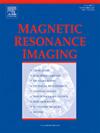使用回顾性瓣膜追踪评估 4D 血流 CMR 全心测量的可靠性和可比性:柏林研究网络的单一供应商研究。
IF 2.1
4区 医学
Q2 RADIOLOGY, NUCLEAR MEDICINE & MEDICAL IMAGING
引用次数: 0
摘要
本研究研究了心内血流动力学,并评估了柏林心血管磁共振研究网络(BER-CMR)多个站点的4D血流CMR测量结果的可比性和可靠性,使用3D电影相对比成像和三方向速度编码。方法:在一项前瞻性多地点队列研究中,20名健康志愿者在不同地点接受了CMR。采用回顾性瓣膜跟踪法定量评估心脏各瓣膜的前向流量(FFV)、峰值(PV)和平均流速(MV)。通过4D血流CMR测量主动脉瓣和肺动脉瓣的FFV,并与电影成像的脑卒中容积(SV)进行比较。使用单个站点的扫描-重新扫描公差范围评估可靠性,如果其他站点的置信区间落在这些范围内,则假定等效性。观察者内部和观察者之间的分析评估了测量的一致性。结果:最终分析包括19名健康志愿者。所有四个心脏瓣膜的位点间可比性分析显示,FFV、PV和MV具有很强的可靠性,除了两个部位的二尖瓣FFV和一个部位的三尖瓣PV。相应心室动脉瓣膜的SV和FFV的相关分析显示出良好的一致性(主动脉瓣:r = 0.89,P 0.90,P )。结论:健康志愿者的4D血流CMR全心测量在各个部位是一致的,尽管生理和技术上存在差异,但显示出很强的一致性。这些发现支持未来的多中心研究。本文章由计算机程序翻译,如有差异,请以英文原文为准。
Assessing reliability and comparability of 4D flow CMR whole heart measurements using retrospective valve tracking: A single-vendor study in the Berlin research network
Introduction
This study investigated intracardiac flow dynamics and assessed the comparability and reliability of 4D flow CMR measurements across multiple sites within the Berlin Research Network for Cardiovascular Magnetic Resonance (BER-CMR) using 3D cine phase-contrast imaging with three-directional velocity encoding in a healthy traveling cohort.
Methods
In a prospective multi-site cohort study, 20 healthy volunteers underwent CMR at different sites. Quantitative assessment of Forward flow Volume (FFV), Peak (PV) and Mean Velocity (MV) across the heart's valves were conducted using retrospective valve tracking. FFV of the aortic and pulmonary valves, measured via 4D flow CMR, was compared to each other and to Stroke Volume (SV) from cine imaging. Reliability was assessed using scan-rescan tolerance ranges from a single site, with equivalency assumed if other sites' confidence intervals fell within these ranges. Intra- and interobserver analyses evaluated measurement consistency.
Results
The final analysis included 19 healthy volunteers. Intersite comparability analysis across all four heart valves revealed a strong reliability for FFV, PV and MV, except for FFV at the mitral valve at two sites and PV at the tricuspid valve at one site. Correlation analysis of SV and FFV of the corresponding ventriculoarterial valves demonstrated good agreement (aortic valve: r = 0.89, P < 0.001; pulmonary valve: r = 0.88, p < 0.001). Inter- and intraobserver analyses yielded good to excellent agreement across all valves (ICC > 0.90, p < 0.001).
Conclusion
4D flow CMR whole-heart measurements in healthy volunteers were consistent across sites, showing strong agreement despite physiological and technical variability. These findings support future multicenter studies.
求助全文
通过发布文献求助,成功后即可免费获取论文全文。
去求助
来源期刊

Magnetic resonance imaging
医学-核医学
CiteScore
4.70
自引率
4.00%
发文量
194
审稿时长
83 days
期刊介绍:
Magnetic Resonance Imaging (MRI) is the first international multidisciplinary journal encompassing physical, life, and clinical science investigations as they relate to the development and use of magnetic resonance imaging. MRI is dedicated to both basic research, technological innovation and applications, providing a single forum for communication among radiologists, physicists, chemists, biochemists, biologists, engineers, internists, pathologists, physiologists, computer scientists, and mathematicians.
 求助内容:
求助内容: 应助结果提醒方式:
应助结果提醒方式:


